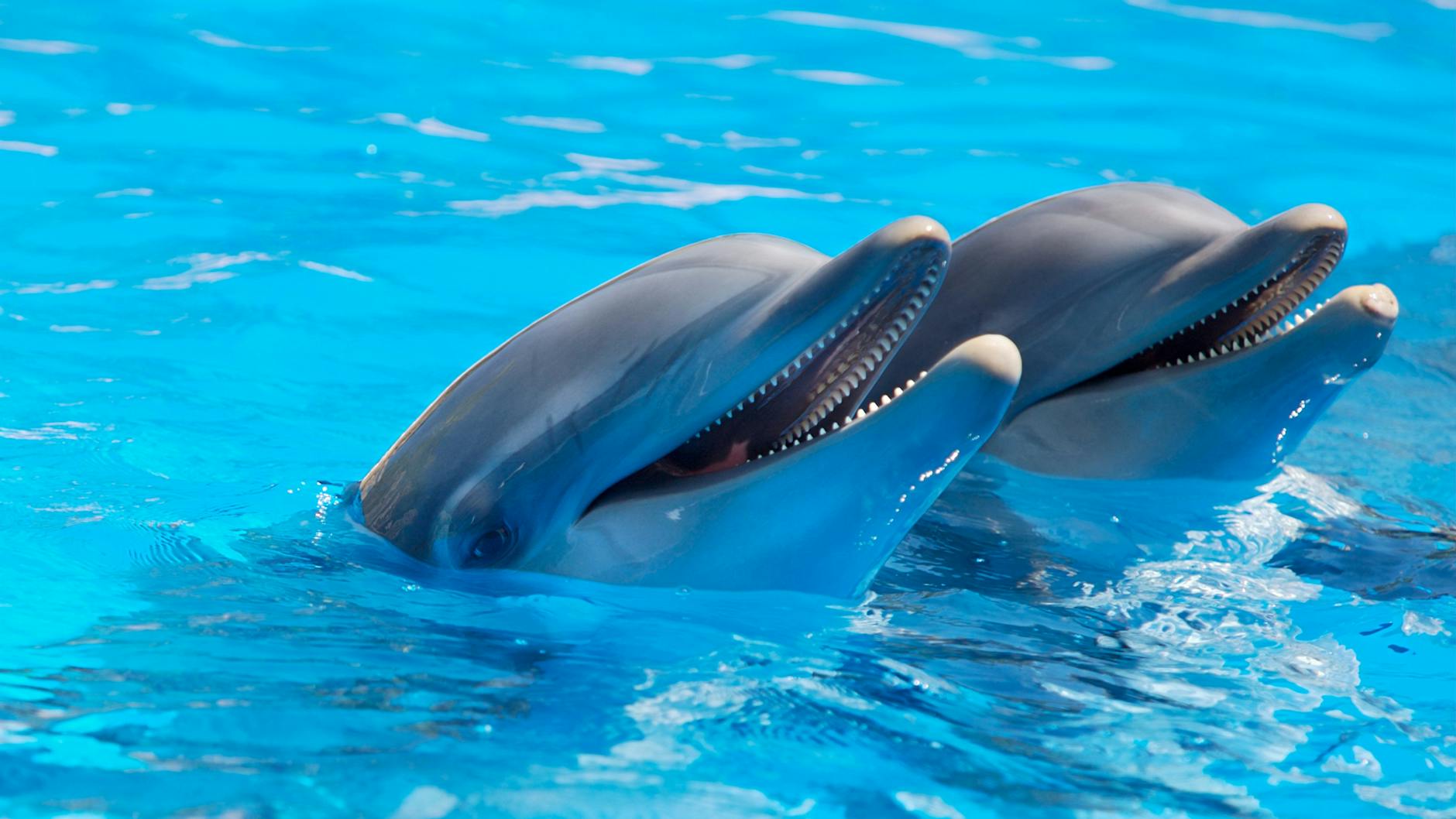Dolphins Breathe is the important issues for Marnier. How often do whales come up for air? Dolphins are among the most recognizable and beloved marine mammals. Known for their intelligence, playful behavior, and agility, dolphins are uniquely adapted to life in the water. Despite being mammals, dolphins rely on air to survive and must frequently surface to breathe.
But how often do dolphins actually come up for air? In this article, we’ll explore the fascinating breathing habits of dolphins, examine the factors that influence. How often they need to breathe, and learn about the adaptations that make them such skilled breathers.
How Dolphins Breathe
Dolphins, like all mammals, need to breathe air through their lungs. They use a blowhole located on top of their heads, which functions similarly to a nostril. When a dolphin surfaces, it opens the blowhole to exhale stale air and inhale fresh oxygen, all in a matter of seconds. After breathing, the blowhole closes tightly. That’s preventing water from entering the respiratory system when the dolphin dives again.
Dolphins have an extremely efficient breathing process. They can exchange up to 80% of the air in their lungs in a single breath, compared to around 15% in humans. This high exchange rate allows them to quickly take in fresh oxygen and prepare for another dive, even when they’re moving at high speeds.

How Often Do Dolphins Come Up for Air?
The frequency with which dolphins surface for air depends on several factors. That’s including their species, size, activity level, and whether they are resting or actively hunting. Here’s a breakdown of how often different species of dolphins come up for air:
- Bottlenose Dolphins Bottlenose dolphins, one of the most well-known species, typically come up for air every 2 to 3 minutes. But, they can hold their breath for much longer if needed, especially when diving deep to search for food. In calm conditions, bottlenose dolphins have been observed staying underwater for up to 8–10 minutes.
- Spinner Dolphins Spinner dolphins are known for their acrobatic leaps and spins. They are active and social, often surfacing every 1 to 2 minutes. Their shorter dive time allows them to maintain their energetic behaviors, like jumping and spinning, as they interact with their pod.
- Common Dolphins Common dolphins are very social and agile, often surfacing every 2 to 3 minutes. They have a high level of activity, frequently engaging in cooperative hunting. Which requires frequent breathing intervals to sustain their energy levels.
- Deep-Diving Dolphins (e.g., Risso’s Dolphins) Deep-diving species like Risso’s dolphins typically dive for longer periods. So, often staying underwater for 5 to 7 minutes. Some deep-diving dolphin species have even been known to hold their breath for as long as 15 minutes when searching for prey in deeper waters.
Factors That Influence How Often Dolphins Breathe
A dolphin’s breathing frequency can vary based on several factors. As its activity level, environment, and physical condition. Let’s look at some of the main factors that impact how often dolphins come up for air:
- Activity Level When dolphins are actively swimming, hunting, or playing, they need more oxygen and come up for air more frequently. During periods of rest, yet, they can stay underwater for longer, conserving energy and reducing their need for oxygen.
- Dive Depth Dolphins that dive deeper tend to stay underwater for longer periods. Deep-diving species have adapted to store more oxygen in their muscles and blood, which allows them to extend their breath-hold time and reach greater depths in search of food.
- Water Temperature In colder waters, dolphins may have to surface more often to regulate their body temperature. As colder environments can increase their metabolic rate and oxygen demand. In warmer waters, they can conserve more energy, potentially allowing them to hold their breath for longer.
- Resting Behavior Dolphins have a unique way of resting called unihemispheric slow-wave sleep. This means they sleep with one half of their brain active while the other half rests. During this time, they still need to surface to breathe but do so at a slower rate, sometimes staying submerged for 5 to 7 minutes between breaths.
- Species and Size Different species have different lung capacities and oxygen storage capabilities. Generally, larger dolphins or those adapted for deep-diving can hold their breath longer and thus come up for air less frequently.
More related post – 5 Facts How often do Whales Come up for Air?
How Dolphins Conserve Oxygen for Longer Dives
Dolphins have evolved several physiological adaptations. That allow them to conserve oxygen during longer dives. Here’s how they manage to stay underwater efficiently:
- High Myoglobin Levels: Dolphins have a high concentration of myoglobin in their muscles. Which binds to oxygen and allows them to store it for longer periods. This helps sustain them during dives.
- Slow Heart Rate: When diving, dolphins can slow their heart rate, reducing their oxygen consumption. This process, called bradycardia, allows them to use oxygen more efficiently during extended dives.
- Redistribution of Blood Flow: Dolphins redirect blood flow to vital organs like the brain and heart when oxygen levels drop, allowing these critical systems to remain oxygenated for longer.
How Dolphin Breathing Differs From Other Marine Mammals
Dolphins share similarities with other marine mammals. But there are unique aspects to their breathing patterns. For example, while larger whales can hold their breath for over an hour, dolphins typically need to surface more frequently.
Dolphins also tend to stay closer to the surface and engage in more frequent, shorter dives, whereas deep-diving whales often spend extended periods underwater.
5 Fascinating Facts About Dolphin Breathing
- Dolphins Breathe Consciously Unlike humans. Who breathe automatically, dolphins must consciously decide to breathe. This conscious breathing allows them to dive and surface at will, but it also means they must remain alert even when resting.
- Dolphins Can Exhale Quickly Dolphins can exhale and inhale in less than a second. This rapid breathing process allows them to stay at the surface for only a brief moment before diving again.
- Blowhole Muscles Keep Water Out Dolphins have strong muscles around their blowholes that keep them tightly sealed while underwater, preventing any water from entering their lungs.
- Breathing Rates Vary by Age Calves (baby dolphins) breathe more frequently than adults, typically surfacing every 20–30 seconds. As they grow, they develop the ability to hold their breath for longer periods, like adult dolphins.
- Dolphin Breathing Is Socially Coordinated Dolphins often synchronize their breathing with other pod members, surfacing and diving in unison. This coordinated behavior helps them stay together, communicate, and avoid potential predators.
Why Understanding Dolphin Breathing Matters
Studying dolphin breathing patterns provides insights into their behavior, health, and adaptation to changing environments. Researchers track dolphin breathing rates to understand their responses to stressors like noise pollution or environmental changes.
Conservation efforts also enjoy understanding dolphin breathing habits. As safe zones can be established to prevent collisions with boats and reduce human disturbance in areas where dolphins frequently surface.
Conclusion
Dolphins come up for air at varying intervals, depending on their species, activity level, dive depth, and environment. Bottlenose dolphins generally surface every 2–3 minutes, while deep-diving dolphins can hold their breath for up to 15 minutes.
The frequency of their breathing showcases their unique adaptations for marine life. That’s allowing them to balance between the need for oxygen and the demands of their underwater activities.
Dolphins’ ability to surface quickly, their efficient oxygen storage. So, their social breathing behaviors highlight their remarkable evolutionary adaptations for life in the ocean. Understanding these breathing patterns not only reveals more about dolphins’ lives. But also aids in efforts to protect and conserve these intelligent and charismatic animals.



Pingback: What Do Whales Eat? Best 5 Feeding Techniques
Pingback: Are Narwhals Real? 10 Amazing Facts